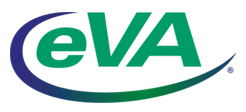By Susan Carol
Originally featured on the Equipment Leasing Advisor
 Our public relations agency and its strategic partners have assisted many types of organizations at various stages of branding development. Because a company’s brand and its reputation are so intertwined, it is an important subject to review. Branding is so much more than establishing a logo and slogan or creating an ad. It is really about ensuring that at every customer touch point there is a positive and consistent experience.
Our public relations agency and its strategic partners have assisted many types of organizations at various stages of branding development. Because a company’s brand and its reputation are so intertwined, it is an important subject to review. Branding is so much more than establishing a logo and slogan or creating an ad. It is really about ensuring that at every customer touch point there is a positive and consistent experience.
At this time in the equipment leasing and finance market there are many companies interested in expanding horizons or introducing new products. Such times call for a brand review, adjustment or simply a refresh.
The three common problems we have seen over more than 25 years are:
- Over-branding when a start-up or expansion-stage company keeps changing its name, identifying images and top-level message. Or, they try to convey every detail about themselves and overwhelm their audience with too much information.
- Inconsistent branding occurs when organizations don’t establish guidelines, and multiple departments get creative and produce conflicting materials.
- Messages and actions don’t add up. The company creates and conveys a lofty value proposition, heavily advertises this, but is unable or unaware that it is not fulfilling the promise of its stated value.
Brand perceptions develop from within and from outside of a company. It is important to review branding regularly and update or refine it over time. Often there is the need for sub-branding when new products are introduced, or for co-branding when a partnership enables one to enhance its image.
When companies merge there is a period when two brands stand together and eventually become one. When a new market is entered, there is often the need to join with another brand or create a product brand that fits into the overall look and feel of the company. Doing this thoughtfully and professionally is critical to success. It is well worth the investment.
It is productive to create a library of branding materials (key messages, logos, ads, power point presentations, electronic signatures, presentation messages, and company or product slogans). These should be made available to all employees so everyone can help establish and maintain the brand.
Branding standards should be created to include social media policies. An identified check point or filter that materials go through before they go are published will help ensure consistency. That’s essential to branding success!
A bad scenario is when a company claims to offer personal customer care and spends thousands of dollars on advertising to convey this message. Then, when someone actually tries to reach customer care, it does not exist.
The brand, and the company’s reputation, can be heavily tarnished in a flash because social media has the potential to become viral, but that is not a reason to avoid social media. In fact, it is a reason to be there. In communications crises, organizations need to have an ability to reach their loyal constituents and influencers just as fast as a detractor can do so.
Re-branding can help when one needs to re-emerge after a negative situation.
In current uncertain economic times, it is important to consider where your weak points may be and identify the swiftest ways to polish your brand or refine it for new markets or opportunities.





